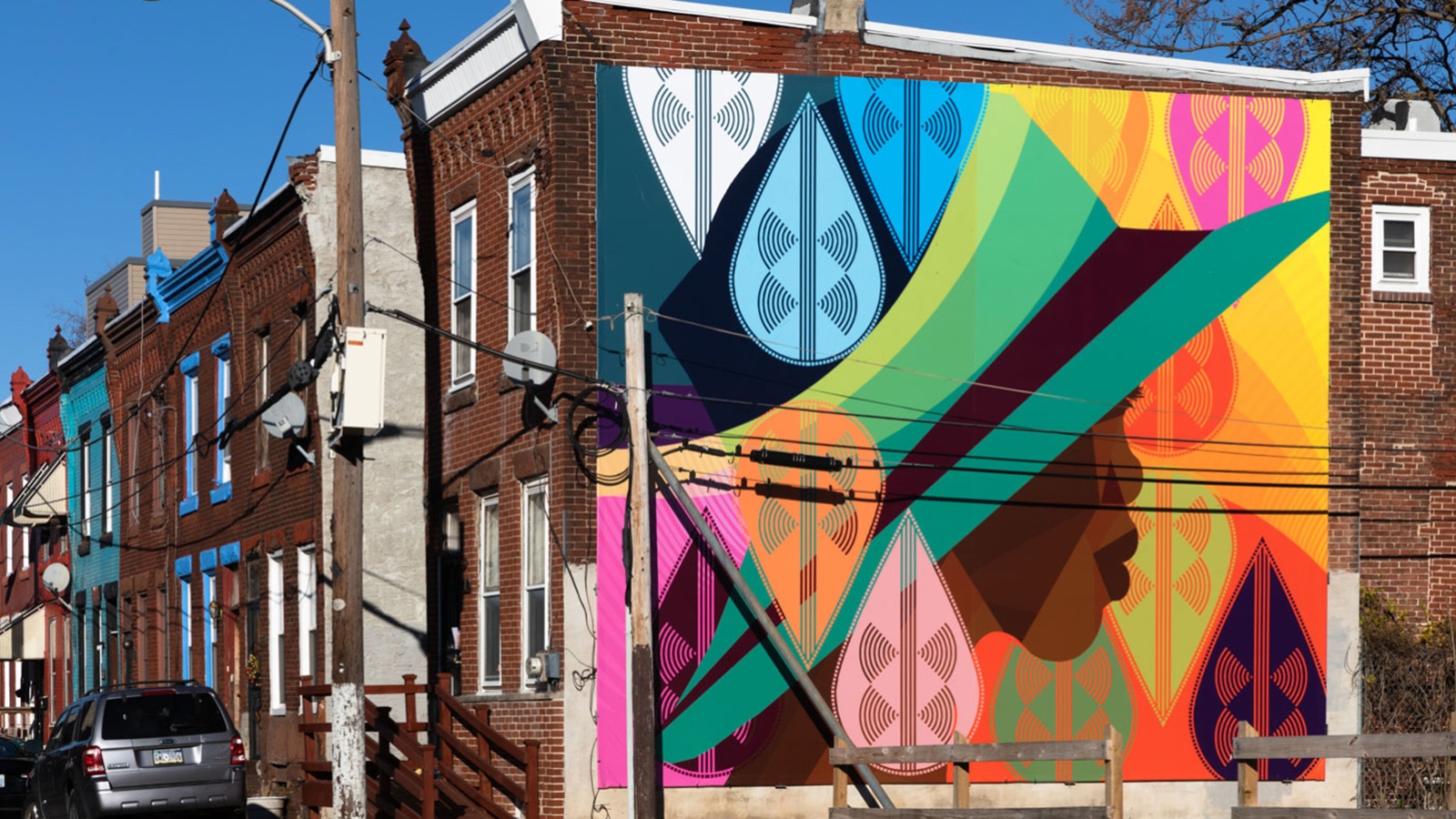Philadelphia is a city of murals, with more than 4,000 (official and unofficial) gracing the walls of its diverse neighborhoods. They are an eclectic assortment, honoring local heroes like Dr. J and Questlove, addressing social justice issues, paying homage to nature. In dense urban areas, murals can bring together a community and help beautify a neighborhood. They may also reduce crime.
Maya Moritz, a criminology doctoral student, was inspired to investigate this hypothesis after she met Professor of Criminology and Sociology John MacDonald. Author of Changing Places: The Science and Art of New Urban Planning, MacDonald is known for his place-based research, which looks at how interventions such as lot greening, litter cleanup, and improved lighting affect crime. MacDonald surmised that murals could have similar benefits, but little research had been done.
As Moritz embarked on the project last fall, she began to see why. To determine a link between murals and crime rate, Moritz needed to know exactly when each mural had been painted—a much harder task than it sounds. It took her eight months to gather information on 200 murals. “I’ve had to email and call every single artist to try and find out when they painted their mural,” she says.

Criminology doctoral student Maya Moritz presenting her research at Penn Grad Talks in February 2024.
She’s also conducted plenty of on-the-ground research, with the hopes that the murals she tracked down would display exact commemoration dates. No such luck. “My walking around ended up being more about understanding the context,” she says. “Like how much graffiti does a mural have? What state is it in? How visible is it? Is it near a park or a playground? Has a building been torn down nearby or has something else gone up in front of it? There are all sorts of things you can’t find out just by looking at a website.”
MacDonald says he appreciates Moritz’s drive to move forward a project that’s already proved challenging. “Maya is really ambitious,” says MacDonald, one of her advisors. “She was doing historic economics before she came to Penn, so she was used to collecting her own data and she also has an impressive analytic rigor. For a lot of beginning doctoral students, this project would feel too daunting and they would scurry away from it, but she leaned in.”
Moritz says her goal is to gather information about 800 to 1,000 murals. But even with her current limited dataset, her findings suggest that crime does indeed decrease in neighborhoods after a mural goes up, and the effect can last well into the future. “It’s up to one less crime per month, so it’s not a huge effect,” she says. “But this is on a street segment, like a block, which is tiny, so one-half to one less crime per month is actually pretty impressive.”
One of the challenges of doing research on place-based interventions, says MacDonald, is that other factors can make the results ambiguous. “There are going to be knock-on effects,” he says. “Maybe a lot gets greened, which then makes that building a better site for a mural. Then because there’s a mural, people are more likely to use the space and maybe the property next door gets fixed.” It’s a complex system, he says, but “if you can say, ‘We see this change in hundreds and hundreds of cases and it’s directly related to the timing of when the mural went up,’ then it’s convincing evidence.”
If you can say, ‘We see this change in hundreds and hundreds of cases and it’s directly related to the timing of when the mural went up,’ then it’s convincing evidence.
Eventually, Moritz says she wants to move beyond simply determining whether murals curb crime to shedding light on which types are most successful at doing so.
“I don’t have enough data yet to do that sort of analysis, but I think there are going to be very different effects based on the topic of the mural,” she says. That information could be useful, she adds, for communities planning one of these paintings: “We could tell them, for example, that we found that local heroes work and nature doesn’t, or that having children in the murals makes them more effective. They could do what they want with that information, but just to know what works could be helpful, especially if the community already knows it has a crime or violence or graffiti issue.”
Moritz shared her research in February at the 2024 Penn Grad Talks, a competition of Penn Arts & Sciences graduate students who gave TED Talk–style presentations about their work. She won first place in the Social Sciences category.
Main image: Seasons ©2020 City of Philadelphia Mural Arts Program/Shawn Theodore, 2113 North Corlies Street. Photo by Steve Weinik.



